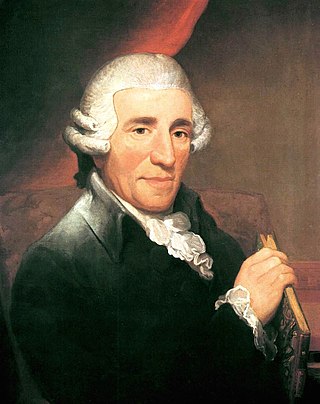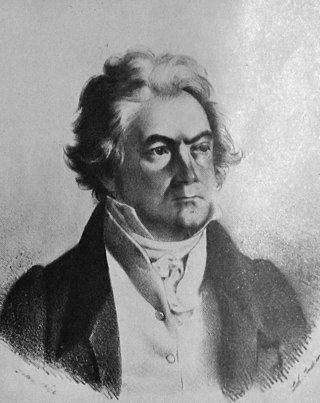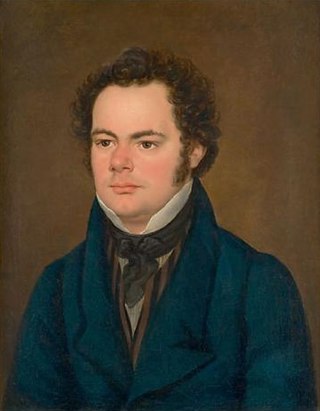
Sonata, in music, literally means a piece played as opposed to a cantata, a piece sung. The term evolved through the history of music, designating a variety of forms until the Classical era, when it took on increasing importance. Sonata is a vague term, with varying meanings depending on the context and time period. By the early 19th century, it came to represent a principle of composing large-scale works. It was applied to most instrumental genres and regarded—alongside the fugue—as one of two fundamental methods of organizing, interpreting and analyzing concert music. Though the musical style of sonatas has changed since the Classical era, most 20th- and 21st-century sonatas still maintain the same structure.
Sonata form is a musical structure generally consisting of three main sections: an exposition, a development, and a recapitulation. It has been used widely since the middle of the 18th century.
The Piano Sonata No. 16 in C major, K. 545, by Wolfgang Amadeus Mozart was described by Mozart in his own thematic catalogue as "for beginners", and it is very commonly known by the nickname Sonata facile or Sonata semplice.

The Symphony No. 8 in F major, Op. 93 is a symphony in four movements composed by Ludwig van Beethoven in 1812. Beethoven fondly referred to it as "my little Symphony in F", distinguishing it from his Sixth Symphony, a longer work also in F.

Ludwig van Beethoven's Piano Sonata No. 29 in B♭ major, Op. 106 is a piano sonata that is widely viewed as one of the most important works of the composer's third period and among the greatest piano sonatas of all time. Completed in 1818, it is often considered to be Beethoven's most technically challenging piano composition and one of the most demanding solo works in the classical piano repertoire. The first documented public performance was in 1836 by Franz Liszt in the Salle Erard in Paris to an enthusiastic review by Hector Berlioz.
Sonata rondo form is a musical form often used during the Classical and Romantic music eras. As the name implies, it is a blend of sonata and rondo forms.
Cyclic form is a technique of musical construction, involving multiple sections or movements, in which a theme, melody, or thematic material occurs in more than one movement as a unifying device. Sometimes a theme may occur at the beginning and end ; other times a theme occurs in a different guise in every part.

The Symphony No. 104 in D major is Joseph Haydn's final symphony. It is the last of the twelve London symphonies, and is known as the London Symphony. In Germany it is commonly known as the Salomon Symphony after Johann Peter Salomon, who arranged Haydn's two tours of London, even though it is one of three of the last twelve symphonies written for Viotti's Opera Concerts, rather than for Salomon.

The String Quartet No. 15 in A minor, Op. 132, by Ludwig van Beethoven, was written in 1825, given its public premiere on November 6 of that year by the Schuppanzigh Quartet and was dedicated to Count Nikolai Galitzin, as were Opp. 127 and 130. The number traditionally assigned to it is based on the order of its publication; it is actually the thirteenth quartet in order of composition.
The double variation is a musical form used in classical music. It is a type of theme and variations that employs two themes. In a double variation set, a first theme is followed by a second theme (B), followed by a variation on A, then a variation on B, and so on with alternating A and B variations. Often there is a coda at the end.

Ludwig van Beethoven's Piano Sonata No. 1 in F minor, Op. 2 No. 1, was written in 1795 and dedicated to Joseph Haydn. It was published simultaneously with his second and third piano sonatas in 1796.

Ludwig van Beethoven's Piano Sonata No. 22 in F major, Op. 54, was written in 1804. It is contemporary to the first sketches of the Symphony No. 5 in C Minor. It is one of Beethoven's lesser known sonatas, overshadowed by its widely known neighbours, the Waldstein and the Appassionata.
The Symphony No. 89 in F major, Hoboken I/89, was written by Joseph Haydn in 1787, and performed under the auspices of Nikolaus Esterházy at Esterháza. It is sometimes referred to as The Letter W referring to an older method of cataloging Haydn's symphonic output. The second and fourth movements of this symphony are based on movements of a Concerto for Lire Organizzata in F, Hob. VIIh/5, that Haydn composed in 1786, a year before this work, for Ferdinand IV, King of Naples. To accommodate other orchestras, Haydn had arranged all of his Lire Concertos to be played with flute and oboe as the solo instruments instead of the two lire. Similar substitutions were made adapting the movements into a symphonic form, giving this work a decidedly windband flavor.
The Symphony No. 75 in D major is a symphony composed by Joseph Haydn between 1779 and 1781.
The six String Quartets, Op. 76, by Joseph Haydn were composed in 1797 or 1798 and dedicated to the Hungarian count Joseph Georg von Erdődy (1754–1824). They form the last complete set of string quartets that Haydn composed. At the time of the commission, Haydn was employed at the court of Prince Nicolaus Esterházy II and was composing the oratorio The Creation as well as Princess Maria Hermenegild Esterházy's annual mass.

Franz Schubert's last three piano sonatas, D 958, 959 and 960, are his last major compositions for solo piano. They were written during the last months of his life, between the spring and autumn of 1828, but were not published until about ten years after his death, in 1838–39. Like the rest of Schubert's piano sonatas, they were mostly neglected in the 19th century. By the late 20th century, however, public and critical opinion had changed, and these sonatas are now considered among the most important of the composer's mature masterpieces. They are part of the core piano repertoire, appearing regularly on concert programs and recordings.

The Symphony No. 21 in A major, Hoboken I/21, was composed by Joseph Haydn around the year 1764. The symphony’s movements have unusual structures that make their form hard to identify. The parts that pertain to sonata form are often hard to recognize immediately and are often identified “only in retrospect.”
A secondary development, in music, is a section that appears in certain musical movements written in sonata form. The secondary development resembles a development section in its musical texture, but is shorter and occurs as a kind of excursion within the recapitulation section.
Joseph Haydn's Symphony No. 47 in G major Hob. I:47 was probably written in 1772. It was nicknamed "The Palindrome".

The String Quartets, Op. 50, were composed by Joseph Haydn in 1787. The set of six quartets was dedicated to King Frederick William II of Prussia. For this reason the set is commonly known as the Prussian Quartets. Haydn sold the set to the Viennese firm Artaria and, without Artaria's knowledge, to the English publisher William Forster. Forster published it as Haydn's Opus 44. Haydn's autograph manuscripts for Nos. 3 to 6 of the set were discovered in Melbourne, Australia, in 1982.









